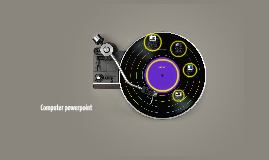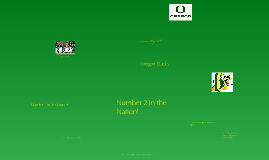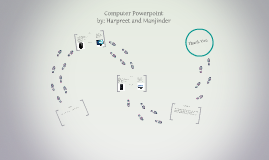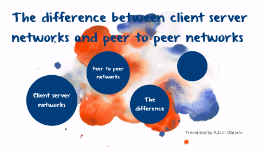Computer Science Template
Transcript: 2000 China's Tianhe-1 supercomputer Until June 2011, the Tianhe, which was upgraded to Tianhe-1A, was the fastest supercomputer in the world, with a speed of over a petaflop Used to run solar energy simulations and complex molecular studies 2010 Apple Iphone is released Combination of web browser, music player, and mobile phone Able to download applications Touchscreen with built in GPS navigation, camera, weather reports, messaging, and voice dictation First 1 TB hard disk drive (HDD) Hitachi Deskstar 7K1000, which used 5 200GB platters In comparison to the very first HDD, which held 3.75MB, is had a greater storage capacity by a factor of 300,000 and it was a lot smaller. 2008 2015 Creation of the Apple Watch First computer incorporated watch with sensors for the environment and monitoring of health. Compatible with other Apple products 2005 Creation of the edible silicon grain chips Used by ingesting microchips to detect effect of drugs on body Monitor other vital signs of life University of Michigan Micro Mote World's smallest computer at the time Three types: Measure pressure Measure temperature Take images Less than 5mm wide and were used for biological advances, measuring ecological changes with the use of a computer, and audio and video analysis Powered by light energy through the use of a photocell Nest Learning Thermostat Early product of an everyday device having network connectivity and can manage information The Nest allowed for remote access to a user’s home and could send data on power consumption It can determine the patterns of the thermostat and can adopt that pattern by itself 2005 Computer History Timeline 2009 2019 2007 2016 NASA Research Center supercomputer Columbia Used for space vehicle analysis, astrophysics, weather and ocean modeling Second fastest computer in the world Increased supercomputing capacity 10-fold Arduino is launched as an inexpensive micro controller Used as a means for hardware to interact with the environment through sensors and actuators Used for robots, motion detectors, and etc. Fixstars Solutions release world's first 13 terabyte solid-state disk Capable of holding massive amounts of data by using circuit assemblies First reprogrammable quantum computer released Able to produce new algorithms within its system First time a quantum-computing system had this capability 2015 2011 IBM's Roadrunner supercomputer is completed First computer to reach a performance of 1 petaflop, a unit of computing speed equal to 10^15 floating-point operations per second. Through the use of microprocessors, the supercomputer was used to analyze financial data, model the decay of United States' nuclear arsenal, and to create 3-D medical images. 2010 2014

















